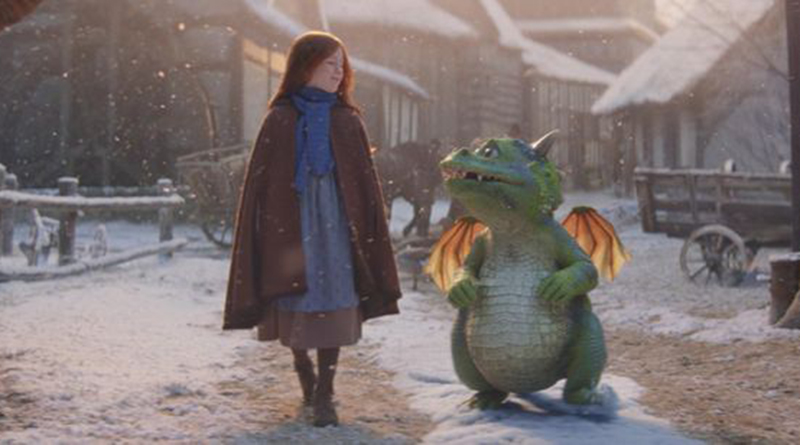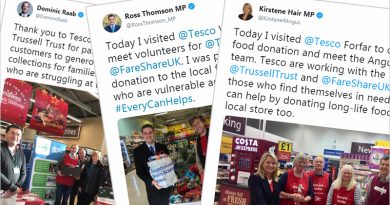Christmas ad festival mustn’t overshadow poverty
Long before the dying embers of the last firework of Bonfire night rained down upon this Brexity and fractured land it was clear that the nation’s retailers were gearing up for the Christmas run in. Indeed, as the digital display on the giant Christmas tree outside my local ASDA told me on Monday 4th November– there were only 51 “sleeps” until the big day.
Yes, all the major players are in position. Coca Cola has announced the venues for its annual truck visits and while the world waited for the John Lewis annual advertising tear jerker to appear yesterday, ADSA, Argos, Iceland and the usual suspects had all released their own efforts almost two weeks before.
As I’ve written elsewhere this is now an annual event keenly anticipated. The major retailers see Christmas as the primary time to capitalise on the willingness of the public to spend money and this seems entirely natural in our consumer led society. As a whole, companies spent a record £5.6bn on seasonal advertising in 2016 and according to the Advertising Association, UK businesses will spend £6.8bn this year, which is again up 4.7% on 2018.
The substance and style of the TV ads from Sainsbury’s and co does not vary much from year to year. The onus is always on giving rather than receiving and of course children are central to the narrative. In this year’s ASDA spectacular, two children see their drab street lit up with the wonders of Christmas via “Santa’s magic”. What’s interesting here is that ASDA is not concerned with trying to sell us particular products. What it really wants to do is insinuate that it not only understands the meaning of Christmas (family, happiness, the magic of giving) but also that the brand is utterly central to the enjoyment of it all. Put another way, no ASDA no Christmas.
All the commercials seek to make buying central to the Christmas experience without showing anything actually being purchased. On an associative level, the idea is to make Marks and Spencer et al an indispensable part of the Christmas experience and to suggest that their brand can provide for all eventualities.
But the big question with advertising is always: does it work? We all like to think we are immune to its influences, but as Craig Inglis, Customer Director at John Lewis & Partners and Chairman of the Marketing Society has stated:
“We make just over £8 [profit] for every pound we spend so the Christmas ad campaigns are hugely profitable. The returns are long term as well; we see the continuing impact. The £7m we spend is dwarfed by our competitors. We punch well above our weight.”
And all indications are that we will continue to spend this Christmas, General Election and Brexit uncertainty or not. Bobatoo.co.uk the online insurance advice company recently surveyed 7,000 UK citizens and found that the majority of people (27% of respondents) will be spending between £300 and £500 on gifts this Christmas, while 16% said they would be setting their budget at less than £200.The majority of respondents said that they would be spending in the region of £100-£200, but there was a 48% rise (in comparison with the survey conducted last year) in the number of people spending over £400 on food, drink and decorations. Also reported was a 22% fall in the number of people spending less than £100, which suggests that UK consumers are planning on spending more this year.
So we spend and yet everywhere we look there is debt and poverty. Recent figures point to 350 people declared bankrupt every day. As of June this year, the average debt per adult in the UK was calculated at £31,232 and in 2019 thus far, the Citizens Advice Bureaux has dealt with 2,527 new debt problems every day.
As is increasingly obvious, homelessness and rough sleeping are the shameful conditions of all British towns and cities with the Office for National Statistics stating there were 726 deaths of homeless people in England and Wales registered in 2018.
This should be simply unacceptable, and the tragedy of this Christmas is the widening gap between the haves and the have nots.




